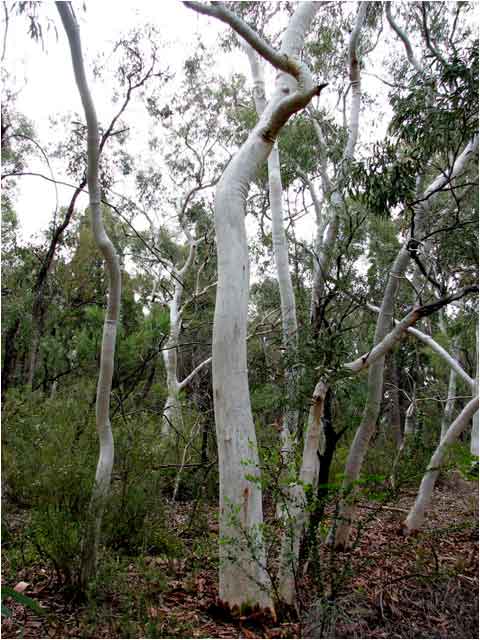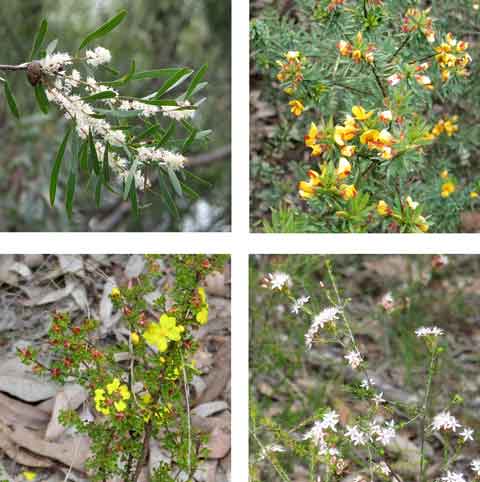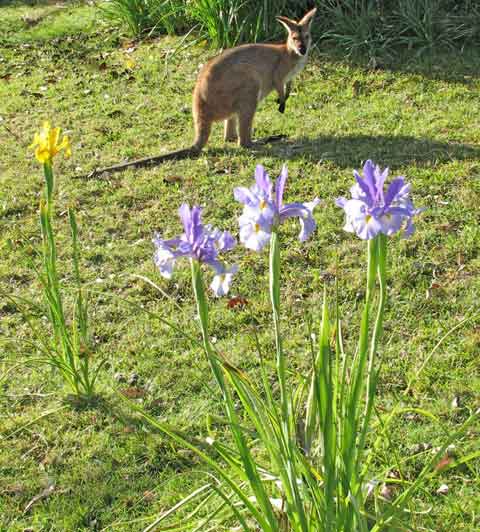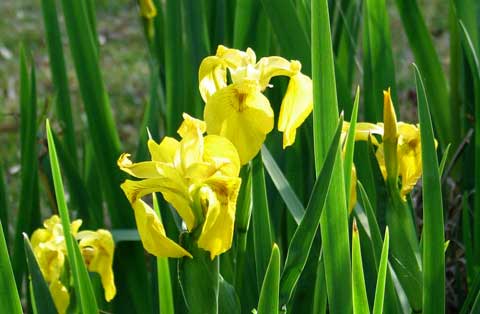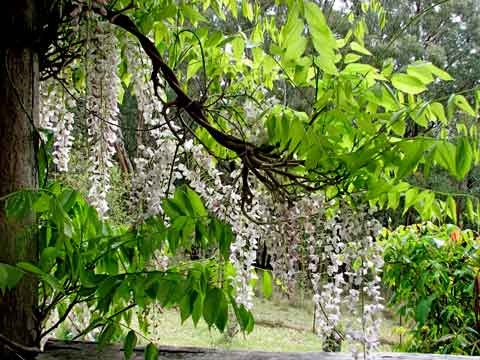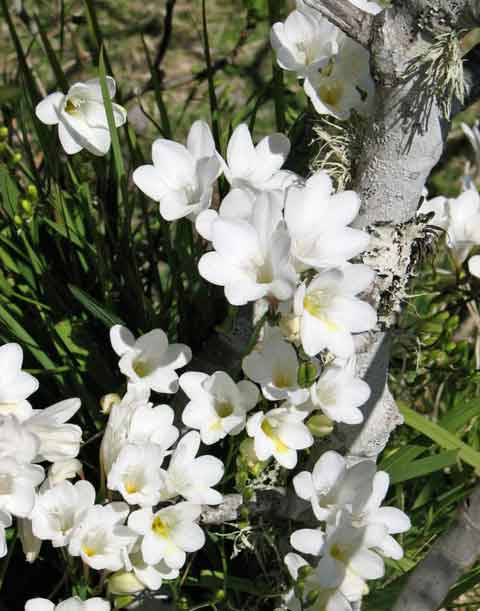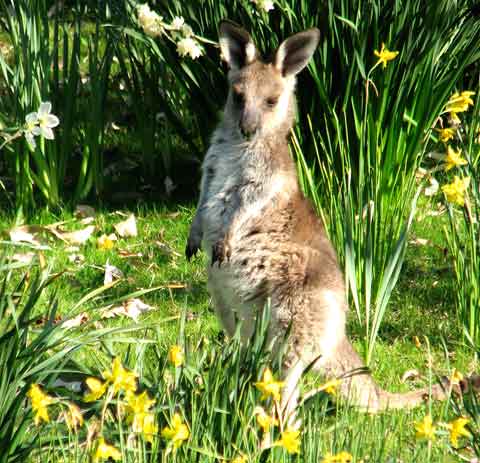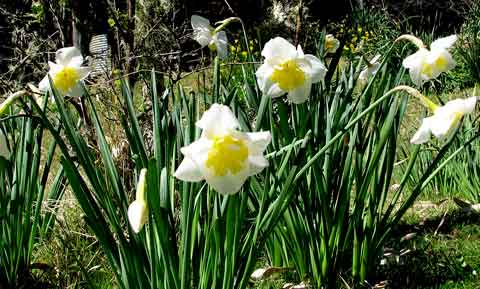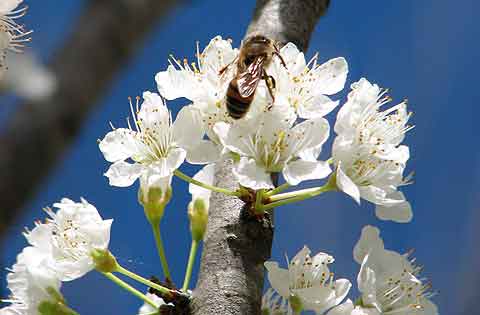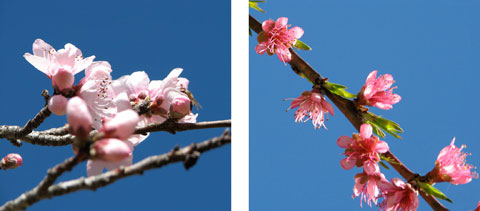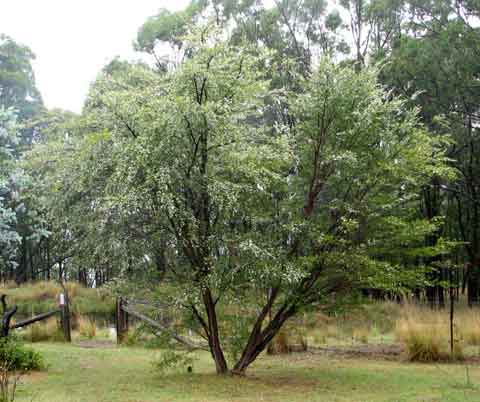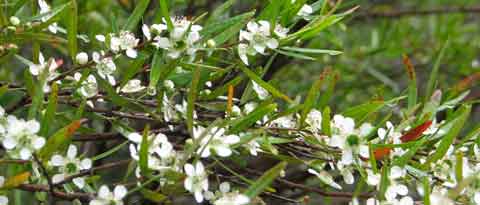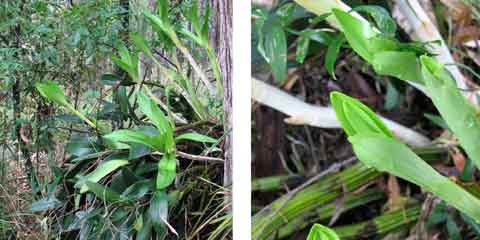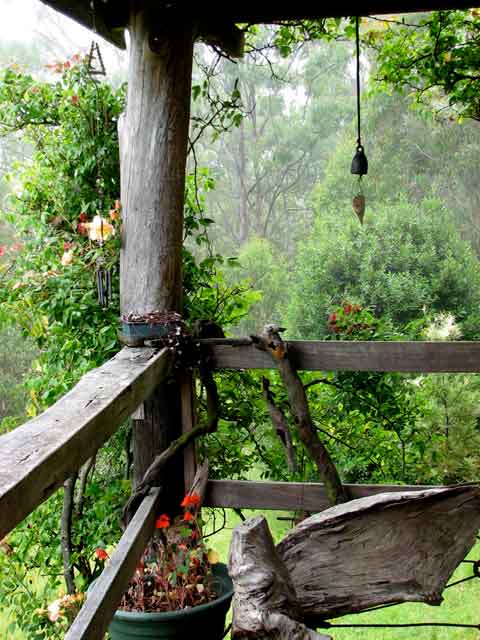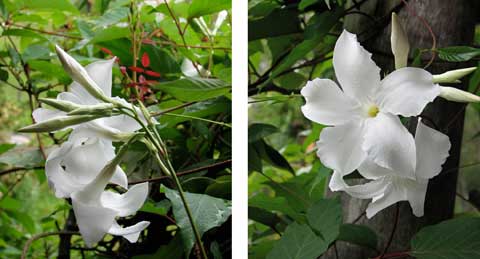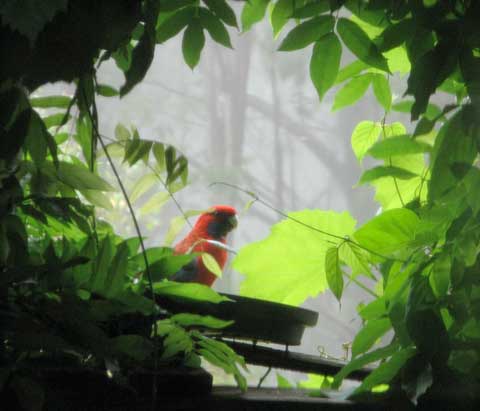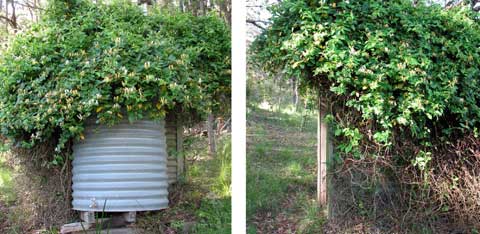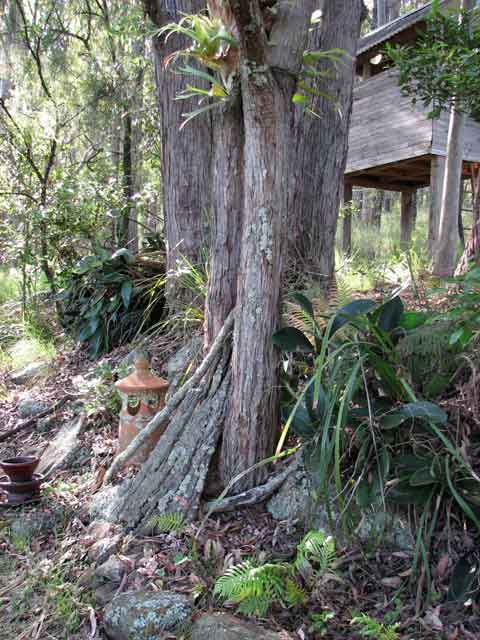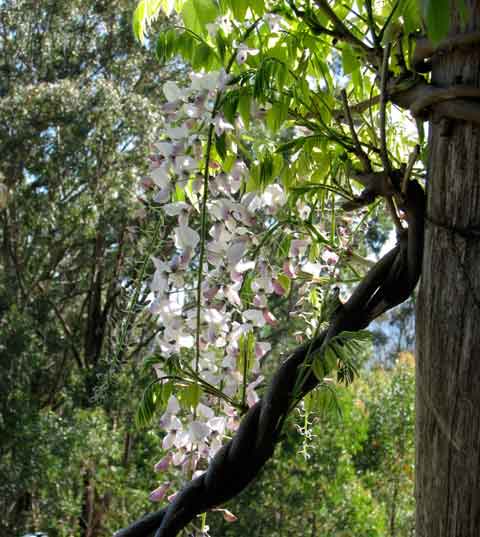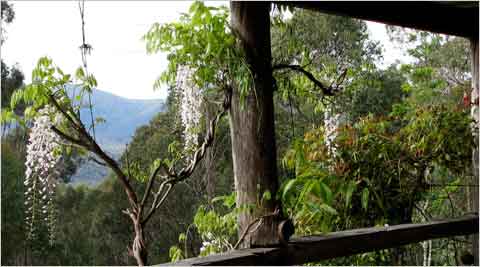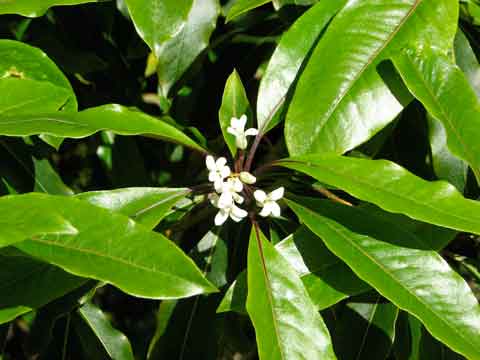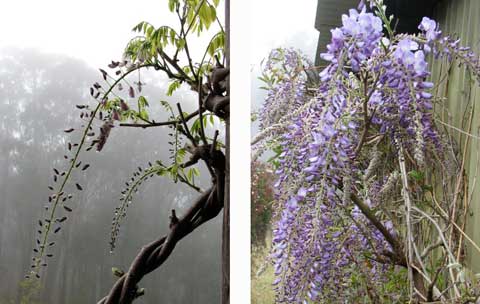This year I have only three varieties of rose in bloom — all climbing varieties. The others were shrubs but are now mere snapped sticks and stripped stems, some with a topknot of leaves where the wallabies and roos can’t reach.
Last year they all bloomed but the climbing ones were eaten by the possum. Since the quoll seems to have eaten the possum, where these roses have climbed out of reach of the determinedly reaching macropods, they are giving me a fabulous display in this late Spring.

The Crepuscule rose on the verandah is bursting with buds and its ragged apricot blooms are buzzing with bees. This rose has been climbing for about 15 years and its stems are thick and woody and likely to lift the battens on the verandah roof eaves where it snakes around the side, but I can’t bring myself to tell it it stop.
These roses drop their petals fairly quickly when cut, but the other two varieties last well inside. Stuck inside working away on my book, I don’t get outside much now to enjoy them where they grow, so I bring them in.

I am delighted and awed by their beauty every time I look at them. This delicate old-fashioned shell-pink beauty is Madame Carrìère and she bedecks the rusty shed walls, but only above about two metres.
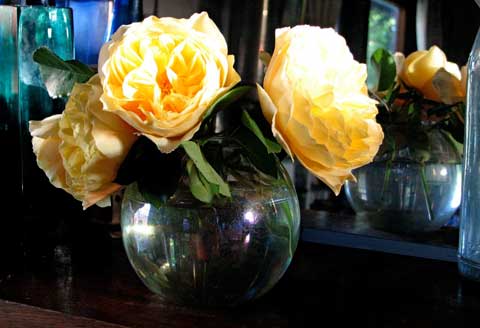
The densely cupped rich yellow flowers of the Graham Thomas rose on the ‘guest wing’ are right beneath where the possum was living, and its stems were constantly broken as it climbed. Now it arches freely and blooms in profusion; I love the sheer opulence of its fat full cups!
As I never know how long any particular balance will last among the creatures here, I shall enjoy these roses while I can, and hope the macropods don’t learnt to climb.
